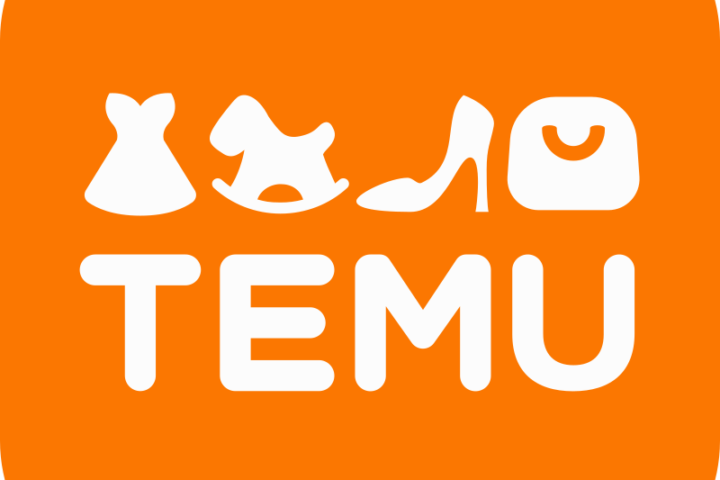Introduction to Market Positioning
Market positioning is a strategic process that involves establishing a brand or product in a unique place within the mind of the target audience. This foundational marketing concept is crucial for businesses seeking to carve out a distinct identity in a crowded marketplace. Effective market positioning not only differentiates a company from its competitors but also helps in attracting and retaining the right target audience. It revolves around understanding the market landscape, identifying consumer needs, and tailoring the brand message to resonate with those needs.
By clearly defining what makes a brand unique, companies can communicate their value proposition more compellingly to potential customers. This involves a deep dive into market research to discern the competitive environment and consumer preferences. The insights gained from this research enable businesses to position themselves in a way that highlights their strengths and unique selling points, thereby creating a compelling narrative that sets them apart from the competition.
Market positioning also plays a vital role in shaping marketing strategies and tactics. A well-positioned brand can determine the most effective channels for communication, design marketing campaigns that speak directly to their audience’s needs, and create a consistent and memorable brand image. This alignment between brand messaging and consumer expectations fosters trust and loyalty, which are critical for long-term business success.
In essence, mastering market positioning is about finding a unique space in the market where a brand can thrive and grow. It requires a thorough understanding of both the competitive landscape and the specific needs and desires of the target audience. By doing so, businesses can ensure that they stand out in the marketplace, attract the right customers, and ultimately achieve sustained growth and profitability.
Understanding Your Target Audience
Identifying and understanding your target audience is pivotal in mastering market positioning and achieving effective differentiation. Without a clear insight into who your customers are, any efforts to tailor your products or services to meet their needs can fall short. Comprehensive audience research forms the foundation of a robust market positioning strategy, allowing businesses to align their offerings with customer expectations and preferences.
To begin, audience research can be bifurcated into three primary categories: demographics, psychographics, and behavioral insights. Demographic data includes age, gender, income level, education, and geographic location. This information helps in crafting a basic profile of your audience, which can be pivotal in understanding broad market segments.
Psychographics delve deeper, exploring the interests, values, attitudes, and lifestyles of your target audience. This qualitative data provides a more nuanced understanding of what drives consumer behavior and preferences. Leveraging psychographic insights can significantly enhance differentiation by allowing businesses to resonate more deeply with specific customer values and lifestyle choices.
Behavioral insights focus on the actions of your audience, such as purchasing habits, brand loyalty, and product usage patterns. Understanding these behaviors can be instrumental in refining your market positioning, as it reveals actual consumer interactions with your products or services.
To synthesize this data into actionable strategies, creating detailed buyer personas is highly recommended. A buyer persona is a semi-fictional representation of your ideal customer, based on real data and insightful market research. It includes detailed descriptions of demographic, psychographic, and behavioral characteristics, as well as pain points, goals, and purchasing motivations. By developing well-rounded buyer personas, businesses can tailor their positioning strategy to more effectively meet the needs of their target audience, thereby enhancing differentiation.
In conclusion, a thorough understanding of your target audience is indispensable for successful market positioning. By leveraging demographic, psychographic, and behavioral insights, and crafting detailed buyer personas, businesses can better align their offerings with the needs and expectations of their customers, ensuring a distinctive and impactful market presence.
Analyzing Competitors
Conducting a thorough competitive analysis is a crucial step in mastering market positioning. This process involves identifying both direct and indirect competitors, assessing their strengths and weaknesses, and gaining insights into their market positioning strategies. By understanding the competitive landscape, businesses can pinpoint opportunities for differentiation and devise strategies to stand out.
To begin, identify direct competitors who offer similar products or services and target the same customer base. Indirect competitors, on the other hand, may provide alternative solutions that fulfill the same customer need. Identifying these competitors requires a combination of market research, industry reports, and customer feedback. Once identified, the next step is to evaluate their market positioning strategies.
Analyzing competitors’ strengths and weaknesses involves examining various aspects, such as their product offerings, pricing strategies, distribution channels, marketing tactics, and customer perception. Tools like SWOT analysis (Strengths, Weaknesses, Opportunities, Threats) can be instrumental in this evaluation. A SWOT analysis helps in systematically categorizing the internal and external factors that influence a competitor’s market position, thus providing a comprehensive view of their capabilities and limitations.
In addition to SWOT analysis, competitive matrices are valuable frameworks for comparing competitors across multiple dimensions. For instance, a competitive matrix might compare competitors based on factors like product features, pricing, market share, and customer satisfaction. This visual representation facilitates a clearer understanding of where each competitor stands in relation to others, highlighting areas where your business can differentiate itself.
Utilizing these tools and frameworks effectively allows businesses to craft a unique market positioning strategy that leverages their strengths while addressing market gaps left by competitors. By continuously monitoring and analyzing the competition, businesses can remain agile and responsive to market changes, ensuring sustained differentiation and competitiveness.
Defining Your Unique Value Proposition (UVP)
A Unique Value Proposition (UVP) is a clear statement that describes the unique benefits your product or service offers to customers. It articulates why your offerings are more valuable or different compared to competitors. A strong UVP is vital for market positioning as it helps businesses stand out in a crowded marketplace and resonate with their target audience.
To develop a compelling UVP, follow these steps:
1. Identify Your Target Audience: Understand who your potential customers are. Conduct market research to gather insights into their needs, preferences, and pain points. This foundational knowledge ensures your UVP is tailored to address specific customer segments effectively.
2. Analyze Competitors: Evaluate your competitors’ strengths and weaknesses. Identify gaps in their offerings that your product or service can fill. This analysis helps you pinpoint areas where you can differentiate yourself.
3. Highlight Unique Benefits: Focus on the unique features and benefits of your product or service. Consider how these advantages solve customer problems or enhance their experience. Emphasize aspects that competitors cannot easily replicate or surpass.
4. Craft a Clear and Concise Statement: Create a succinct and memorable UVP. It should convey the essence of your value in a few sentences. Use simple, jargon-free language that your audience can easily understand and relate to.
Examples of effective UVPs from successful companies include:
Slack: “Slack brings all your communication together in one place. It’s real-time messaging, archiving, and search for modern teams.”
Dollar Shave Club: “A great shave for a few bucks a month. No commitment, no fees, no BS.”
To communicate your UVP clearly, integrate it into all customer touchpoints. Ensure it is prominently displayed on your website, marketing materials, and social media profiles. Consistently reinforce your UVP in customer interactions to build a strong and recognizable market position.
Crafting Your Brand Story
In the realm of market positioning, crafting a compelling brand story is a strategic tool that can significantly differentiate your business. A well-articulated brand story not only delineates what your brand stands for but also fosters an emotional connection with your audience, making your brand memorable and trustworthy.
At the heart of an effective brand story lies authenticity. Authenticity in storytelling ensures that your brand’s narrative is genuine and transparent, which can significantly enhance trust among consumers. When customers perceive your story as authentic, they are more likely to develop a deeper connection with your brand, leading to increased loyalty and advocacy.
Relatability is another crucial element in a compelling brand story. Your story should resonate with your target audience’s values, aspirations, and challenges. By addressing the specific needs and pain points of your audience, your brand story can position your business as a relevant and indispensable part of their lives. This relatability fosters a sense of community and belonging, strengthening the overall market positioning of your brand.
Furthermore, alignment with your Unique Value Proposition (UVP) is essential in your brand storytelling. Your UVP highlights what sets you apart from competitors and why customers should choose your brand. By weaving your UVP seamlessly into your brand narrative, you reinforce your distinctive benefits and advantages, making your positioning in the market clear and compelling. This alignment ensures that every aspect of your story consistently supports and enhances your differentiation strategy.
To build a powerful brand story, start by defining your brand’s mission, vision, and values. Use these foundational elements to create a narrative that highlights your journey, challenges, and triumphs. Engage your audience with stories that showcase real experiences and testimonials, demonstrating the tangible impact of your brand. By doing so, you not only differentiate your business but also create an enduring emotional bond with your audience, solidifying your market position.
Choosing the Right Positioning Strategy
Market positioning is a critical aspect of any business strategy, serving as a foundational element for achieving differentiation in a competitive landscape. To effectively position your brand, choosing the right positioning strategy is paramount. There are several strategies to consider, each with its own set of advantages and applicability depending on your business objectives, market conditions, and competitive landscape. Three primary market positioning strategies are cost leadership, differentiation, and focus strategies.
Cost leadership involves becoming the lowest-cost producer in the industry. This strategy is particularly effective in markets where price competition is fierce, and consumers are highly price-sensitive. Companies adopting this strategy must focus on minimizing costs through efficient operations, economies of scale, and cost-cutting innovations. An exemplary case is Walmart, which has successfully implemented cost leadership by leveraging its massive scale and supply chain efficiencies to offer low prices consistently.
Differentiation focuses on developing unique products or services that offer superior value to consumers. This strategy is ideal in markets where product features, quality, and brand reputation are critical. Companies pursuing differentiation strive to innovate and provide distinctive benefits that set them apart from competitors. Apple Inc. is a classic example, known for its innovative products and exceptional design, which command premium prices and foster brand loyalty.
Focus strategies target a specific market segment, catering to the unique needs and preferences of that niche. This approach can be further divided into cost focus and differentiation focus. Companies employing a focus strategy concentrate their efforts on a particular group of customers, often achieving a deep understanding of the segment and creating tailored solutions. An example is Rolex, which targets the luxury watch market, offering high-quality, prestigious timepieces that appeal to affluent consumers.
Selecting the right positioning strategy involves a thorough analysis of your business objectives, market conditions, and competitive landscape. Consider your company’s core competencies, the nature of your target market, and the strengths and weaknesses of your competitors. By aligning your positioning strategy with these factors, you can establish a strong market position and achieve sustainable differentiation.
Implementing Your Positioning Strategy
Effective implementation of your market positioning strategy is crucial for achieving differentiation and establishing a unique market presence. The first step is to ensure alignment across all marketing channels and touchpoints. This means that your brand messaging should be consistent whether it’s communicated through social media, email campaigns, or physical advertisements. Consistency helps in reinforcing your market positioning and makes it easier for consumers to recognize and remember your brand.
To ensure this consistency, it’s essential to create a comprehensive branding guideline that includes your brand’s voice, tone, and visual elements. This guideline should be shared with all team members and external partners involved in marketing and communication efforts. Additionally, utilizing a centralized content management system can help streamline the creation and distribution of marketing materials, ensuring that all content aligns with your positioning strategy.
Internal communication and employee training play a vital role in the successful execution of your positioning strategy. Employees should be well-versed in the brand’s value proposition and how it differentiates from competitors. Regular training sessions and workshops can aid in keeping the team updated on the latest branding strategies and market positioning objectives. When employees understand and embody the brand, they become effective ambassadors, enhancing the overall customer experience and reinforcing the brand’s market position.
Practical tips for ensuring consistent messaging and branding include conducting regular audits of your marketing materials and channels to identify any misalignments. Engaging with customers through feedback mechanisms can also provide insights into how well your positioning resonates with the target audience. Adjustments should be made based on this feedback to continually refine and improve your strategy.
By meticulously implementing your positioning strategy and ensuring alignment across all touchpoints, you can effectively differentiate your brand in the marketplace. Consistent internal communication and employee training will further solidify your market position and contribute to long-term success.
Measuring and Adjusting Your Positioning
Tracking the effectiveness of your market positioning strategy is essential for ensuring sustained competitive advantage. Regular monitoring allows you to understand how well your differentiation efforts are resonating with your target audience and to make informed adjustments as needed. Key performance indicators (KPIs) and metrics play a pivotal role in evaluating your positioning success.
Among the most important KPIs are market share, brand awareness, and customer satisfaction. Market share indicates your position relative to competitors, while brand awareness measures the extent to which your target audience recognizes and recalls your brand. Customer satisfaction, often gauged through Net Promoter Score (NPS) and customer feedback surveys, provides direct insights into how well your market positioning aligns with customer expectations.
Sales revenue and customer acquisition cost (CAC) are additional critical metrics. Sales revenue helps assess the financial impact of your positioning strategy, while CAC reveals how cost-effective your efforts are in attracting new customers. A decrease in CAC combined with stable or increasing sales revenue can signal a successful differentiation strategy.
Gathering feedback from customers is indispensable for refining your positioning. Engage with your customers through surveys, focus groups, and social media interactions to obtain qualitative insights. Analyzing this feedback can uncover gaps in your current strategy and highlight areas for improvement. Leveraging data analytics tools can further enhance your ability to make data-driven adjustments by providing deeper insights into customer behavior and market trends.
Continuous improvement is key to maintaining a robust market position. For instance, a company that consistently revisits and refines its positioning strategy based on customer feedback and market data can better anticipate and respond to market changes. This proactive approach not only solidifies the company’s market presence but also fosters long-term loyalty and trust among customers.
By systematically measuring and adjusting your market positioning strategy, you can ensure that your differentiation efforts remain effective and relevant, ultimately securing a sustained competitive advantage in a dynamic marketplace.



